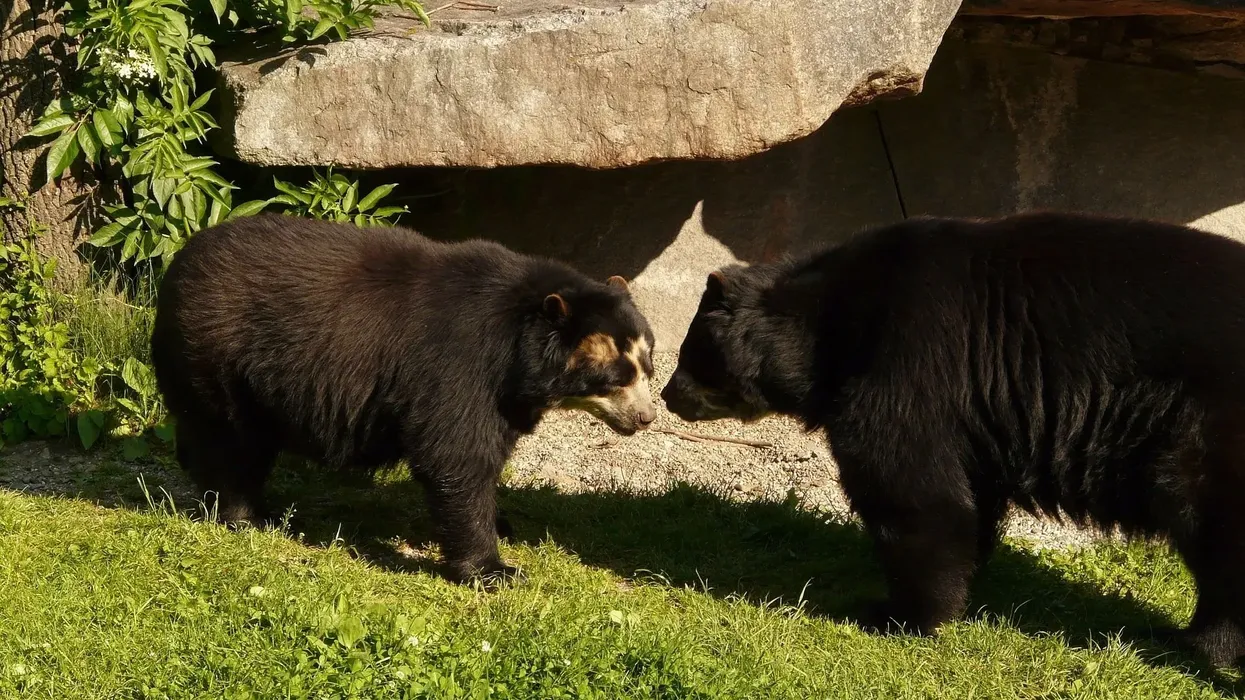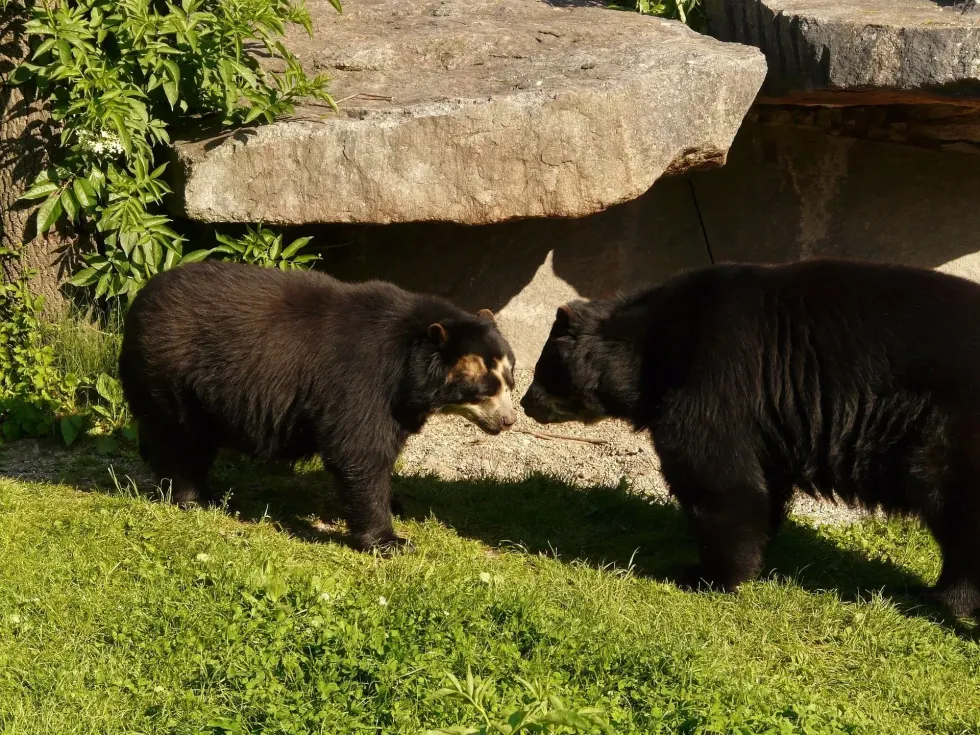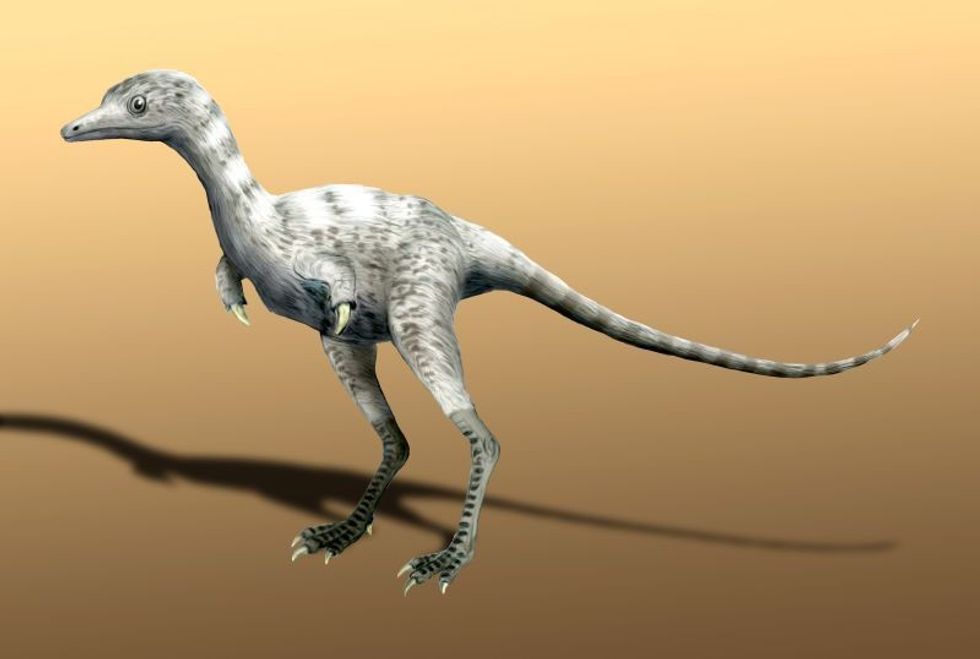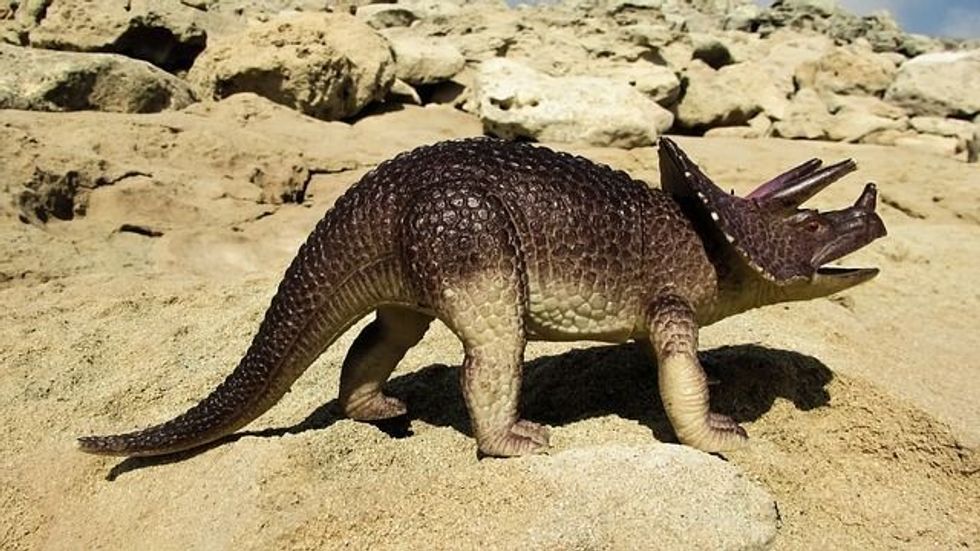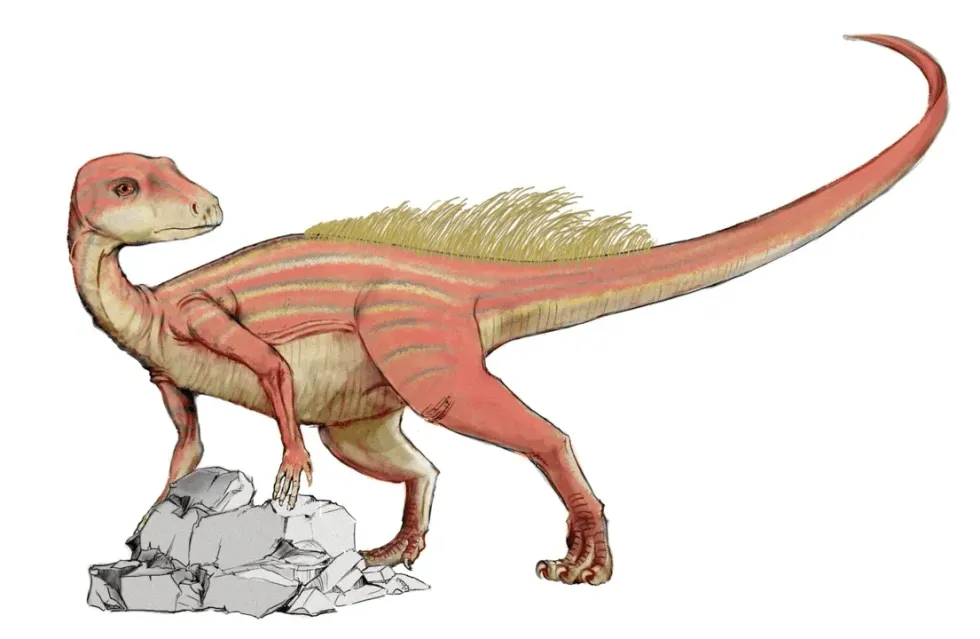Fun Spectacled Bear Facts For Kids

The spectacled bear (Tremarctos ornatus) is the only bear species remaining in South America and one of the most symbolic animals of the Andes Mountains.
Also known by various other names such as the Andean short-faced bear, Andean bear, and the mountain bear, this species inhabits a wide variety of habitats within their range in the Andes Mountains of South America.
Although the animals may be found in high-altitude grasslands, dry deserts, and even scrub forests, they are most abundant in dense cloud forests. In addition, the Andean spectacled bear species are reported to migrate between habitats depending on the season.
The spectacled bear species is also the last living representative of short-faced bears, its closest relative being the extinct Florida spectacled bear native to North America.
Shy and elusive, the Andean bears mostly stay to themselves in the secluded cloud forests of the Andes Mountains, descending to lower elevations only in search of food.
The bears have facial rings encircling the eyes, and these markings often extend down to their chest, lending a distinctive appearance to each member of the species.
Keeping the giant pandas aside, spectacled bears seem to be one of the most herbivorous species of bear, feeding on a diet comprising mostly berries, fruits, honey, bromeliads, cacti, moss, palms, and bamboo. A very small percentage of their diet consists of animal meat, mostly insects, birds, small mammals, or invertebrates.
What's more, these bears of South America are proficient climbers and may build platforms atop trees on which they feed and rest.
Unfortunately, the spectacled bears of the Andes Mountains of South America are Vulnerable species with their survival severely threatened by habitat loss and poaching.
There's a lot more to the Andean bears of South America. Read up on these spectacled bear facts for kids to discover amazing facts about the species!
If you liked reading about the South American spectacled bear, why not learn about other bear species such as the sun bear and brown bear.
Spectacled Bear Interesting Facts
What type of animal is a spectacled bear?
The spectacled bear, also known as the Andean short-faced bear or the Andean bear (Tremarctos ornatus), is a bear species native to South America. It belongs to the Ursidae family and is the only surviving member of the short-faced bear family.
What class of animal does a spectacled bear belong to?
Spectacled bears belong to the class Mammalia.
How many spectacled bears are there in the world?
As per the latest assessment by the International Union for Conservation of Nature (IUCN) Red List of Threatened Species, the total spectacled bear population size of the spectacled bears is between 2,500-10,000 mature individuals.
Where does a spectacled bear live?
The spectacled bear habitat is pretty varied, and the animals can be found in varying altitudes as well. A highly adaptable species, the wild habitat of the Andean bears includes cloud forest, rainforest, páramo grassland (a high-altitude grassland ecosystem found exclusively in the Andes of Venezuela, Colombia, Ecuador, and Peru), and scrub forests.
Humid to very humid montane forests are ideal for these spectacled bears, and they may migrate between habitats depending on the season.
What is a spectacled bear's habitat?
The spectacled bear range is limited to the Andes Mountains of South America. Its geographical distribution extends for more than 2,858 mi (4,599.5 km) and includes Bolivia, Peru, Venezuela, Colombia, Ecuador, Panama, and northwestern Argentina.
On average, the cloud forest habitats that the bears occupy range in elevation between 6,233-7,710 ft (1,899.8-2,350 m). Wetter forests are more preferable since they have an abundance of food resources to support the spectacled bear diet.
However, the Andean bears may also be found at higher altitudes, particularly the mountain snow lines over 16,404 ft (5,000 m). Being excellent climbers, the Andean bears spend a good deal of time on trees. They are known to build platforms in the understory of trees where they rest and feed.
At present, the habitat range of the spectacled bears has been severely compromised due to hunting, habitat degradation, and fragmentation of the population. The population fragmentation is starkly prominent in Ecuador, Colombia, and Venezuela.
Spectacled bears are highly dependent on various habitats for procuring their food supply during the different seasons. Hence, the preservation of large areas of wild habitat is essential to strengthening the spectacled bear conservation efforts.
Who do spectacled bears live with?
The spectacled bears are largely solitary animals, except bear cubs that stay with their mother. After the Andean bear cubs are born, they usually stay with their mother for up to a year before venturing out on their own.
Although the bears are not territorial, they tend to isolate themselves from their own kind to avoid competition. However, small groups of spectacled bears have been reported from areas abundant in food reserves.
How long does a spectacled bear live?
Although the exact lifespan of the spectacled bears in the wild is not known, the animals commonly live for about 20 years unless the lifespan is cut short by human activities. In captivity, the highest recorded lifespan of an Andean bear was 36 years and eight months.
The longest living Andean captive bear was at the National Zoo in Washington, D.C.
How do they reproduce?
The little that is known about the mating behavior of the Andean bears comes from the observation of captive animals. While in captivity, the mating season of the bears extends from February to September with latitudinal variations. On the other hand, animals in the wild may mate at various times of the year, with peaks between April and June.
During the mating season, bear pairs remain together for one to two weeks. The female bears are capable of delayed implantation, which leads to a variation in the gestation period, usually between five to eight months.
Post the gestation period, a single female gives birth to anything between one to four spectacled bear cubs, two being the average.
The female gives birth to the bear cubs in a small den. The size of the litter is positively related to the size of the expecting female and the abundance of food resources.
A spectacled bear cub is born with its eyes closed and weighs between 11-12 oz (311.8-340 g) at birth. The cub's eyes do not open until after a month after their birth.
After the cubs are born, they stay with their mother for about a year before becoming fully independent.
The mother bears display quite the parental investment and do not leave their cubs until the latter can see and walk.
Even after the cubs have become independent after a year after their birth, the female may keep providing maternal care for another year. Both male and female spectacled bears reach breeding maturity between four to seven years of age, with the female bears usually growing slower than the males.
What is their conservation status?
The International Union for Conservation of Nature (IUCN) Red List of Threatened Species lays down the global population and conservation status of wild animals. According to the IUCN, the spectacled bear is a Vulnerable species with a decreasing population trend.
In addition, Andean bears are listed in Appendix I of the Convention on International Trade in Endangered Species of Wild Fauna and Flora (CITES).
Spectacled Bear Fun facts
What do spectacled bears look like?
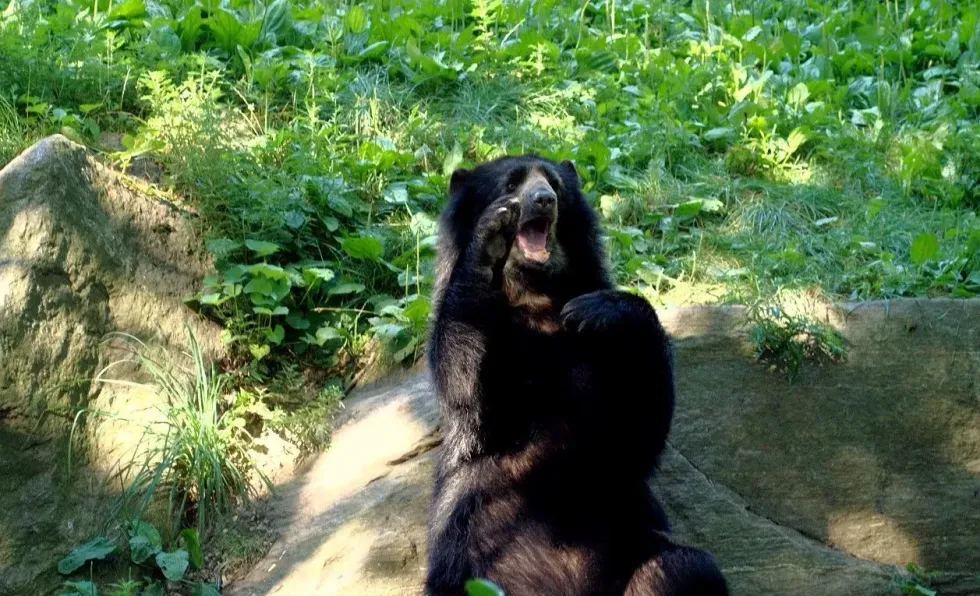
The spectacled bears are stocky and medium-sized with overall blackish fur. Bears with reddish or dark brown fur are not uncommon.
The most distinctive physical feature of the spectacled bears is the presence of ginger-colored or tan markings around their eyes. The pattern and intensity of these facial markings are unique for every spectacled bear and form a basis for distinguishing between individuals.
The tan facial patches may extend down to the chest. Besides, spectacled bears have a short, fur-covered tail, a stout muzzle, and a short, thick neck.
One of the many spectacled bear adaptations that make them great tree climbers is the presence of longer front limbs. Moreover, the facial muscles of the bears are such that they are well adapted to a herbivorous diet.
How cute are they?
While the Peruvian spectacled bear may not be as cute as the giant panda, the furry animals look quite adorable in their own right. The facial patches around their eyes lend them a cute, bespectacled appearance.
How do they communicate?
Spectacled bears have a very well-developed sense of smell which happens to be their primary mode of communication to perceive the environment. The bear's vision is short, and they have moderate hearing abilities.
In addition, mother bears may use various sounds to communicate with their cubs. Common sounds made by the spectacled bears may range from soft purrs to high-pitched shrieks.
How big is a spectacled bear?
The spectacled bear size is different for males and females, with the males being about one-third larger than females. The bears range in length between 47-79 in (119.3-200.6 cm). On average, spectacled bears may be as large as the Asiatic black bear.
How fast can a spectacled bear move?
It is unknown how fast spectacled bears move. Despite their clumsy and heavy appearance, bears, in general, can move astonishingly fast.
How much does a spectacled bear weigh?
While the male bears range in weight between 220-440 lb (99.7-199.5 kg), females can weigh 77-181 lb (35-82 kg).
What are the male and female names of the species?
An adult male bear is called boar, and an adult female bear is called a sow.
What would you call a baby spectacled bear?
Baby spectacled bears are called cubs.
What do they eat?
Spectacled bears are one of the most vegetarian bears out there. Their diet primarily consists of plant matter such as fruits, nuts, seeds, grains, honey, bamboo, palms, orchids, tree wood, moss, cacti, and bromeliads.
The bears may also supplement their diet with animal meat by preying on invertebrates, birds, insects, and small mammals. Spectacled bears are unique in their ability to build high platforms in forest canopies to get more access to food.
Are they dangerous?
Spectacled bears are not known to be particularly dangerous and are one of the least aggressive bears known. Hence, a spectacled bear attack is unheard of. However, they are rather shy and elusive animals and will usually avoid contact with humans.
Would they make a good pet?
Spectacled bears are wild animals with a dwindling population status. Hence, it is out of the question to try and keep them as pets.
Did you know...
Known spectacled bear predators include jaguars and mountain lions. The adult Andean bear males may also prey on cubs.
The Spectacled Bear Conservation Society was established in Peru in 2006 in an effort to study and protect the spectacled bear population.
Spectacled bears are known to raid cornfields in small groups and may prove to be a nuisance.
Local names of the Andean spectacled bear are ukumari (in the indigenous Quechua language) and jukumari (in Quechua and Aymara). Other local names of the Andean bear are bestia, anteojudo, and cariblanco, to name a few.
Spectacled bears are not known to hibernate because they inhabit tropical habitats that do not experience extreme winters.
Spectacled bears hold immense cultural and religious value among indigenous people who share their range. However, the bear is also indiscriminately hunted for the supposed uses of many of its body parts. For instance, the bear's gall bladder is a highly valuable commodity in the Asian market for its apparent traditional medicinal benefits.
The spectacled bear has a prominent status in pop culture. Paddington Bear, a popular character in children's literature, is actually a spectacled bear.
Why are they called spectacled bears?
Spectacled bears get their name from the characteristic tan markings around their eyes. The facial patches make the bears look like they are wearing spectacles.
Do spectacled bears eat meat?
Spectacled bears are mostly herbivorous, and meat comprises a very small portion of their diet, about 5-7 %. The bears may prey on small mammals, birds, insects, and invertebrates to supplement their plant-based dietary intake.
While their small mammal prey usually includes rodents, mice, and rabbits, there have been reports of spectacled bears hunting down llama, adult deer, horses, and domestic cattle.
Here at Kidadl, we have carefully created lots of interesting family-friendly animal facts for everyone to discover! For more relatable content, check out these polar bear facts and black bear facts for kids.
You can even occupy yourself at home by coloring in one of our free printable cave
We Want Your Photos!
More for You
See All
Bachelor of Arts specializing in French with Film Studies, Bachelor of Arts (Year Abroad) specializing in Literature, History, Language, Media, and Art

Georgia StoneBachelor of Arts specializing in French with Film Studies, Bachelor of Arts (Year Abroad) specializing in Literature, History, Language, Media, and Art
Georgia is an experienced Content Manager with a degree in French and Film Studies from King's College London and Bachelors degree from Université Paris-Sorbonne. Her passion for exploring the world and experiencing different cultures was sparked during her childhood in Switzerland and her year abroad in Paris. In her spare time, Georgia enjoys using London's excellent travel connections to explore further afield.
Disclaimer
1) Kidadl is independent and to make our service free to you the reader we are supported by advertising. We hope you love our recommendations for products and services! What we suggest is selected independently by the Kidadl team. If you purchase using the Buy Now button we may earn a small commission. This does not influence our choices. Prices are correct and items are available at the time the article was published but we cannot guarantee that on the time of reading. Please note that Kidadl is a participant in the Amazon Services LLC Associates Program, an affiliate advertising program designed to provide a means for sites to earn advertising fees by advertising and linking to Amazon. We also link to other websites, but are not responsible for their content.
2) At Kidadl, we strive to recommend the very best activities and events. We will always aim to give you accurate information at the date of publication - however, information does change, so it’s important you do your own research, double-check and make the decision that is right for your family. We recognise that not all activities and ideas are appropriate for all children and families or in all circumstances. Our recommended activities are based on age but these are a guide. We recommend that these ideas are used as inspiration, that ideas are undertaken with appropriate adult supervision, and that each adult uses their own discretion and knowledge of their children to consider the safety and suitability. Kidadl cannot accept liability for the execution of these ideas, and parental supervision is advised at all times, as safety is paramount. Anyone using the information provided by Kidadl does so at their own risk and we can not accept liability if things go wrong.
3) Because we are an educational resource, we have quotes and facts about a range of historical and modern figures. We do not endorse the actions of or rhetoric of all the people included in these collections, but we think they are important for growing minds to learn about under the guidance of parents or guardians.
